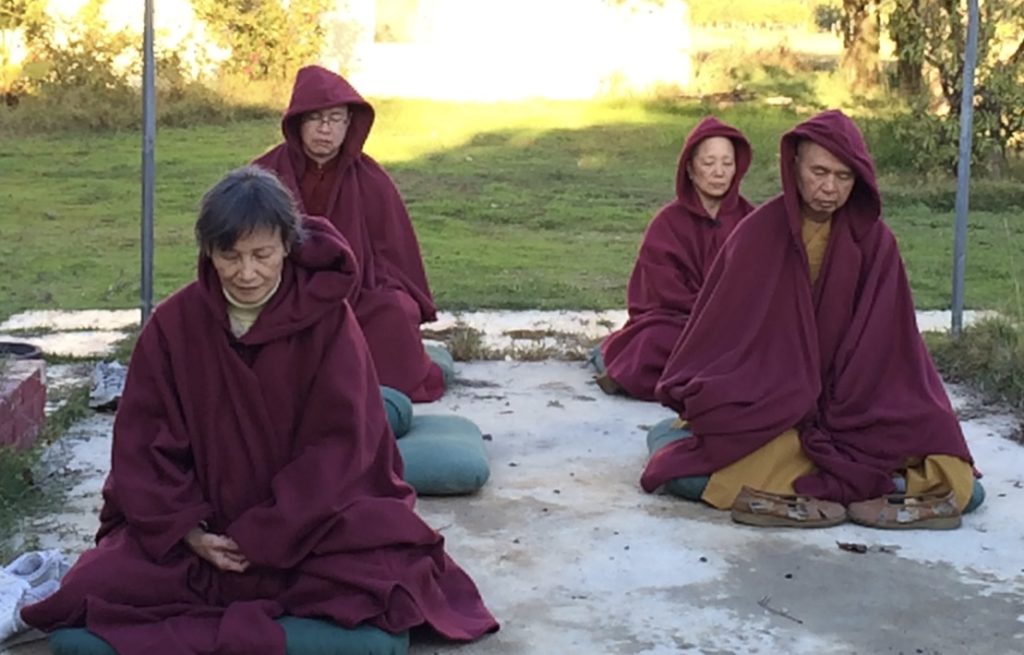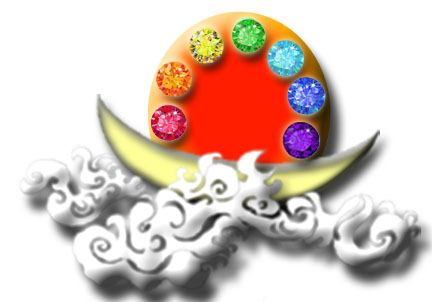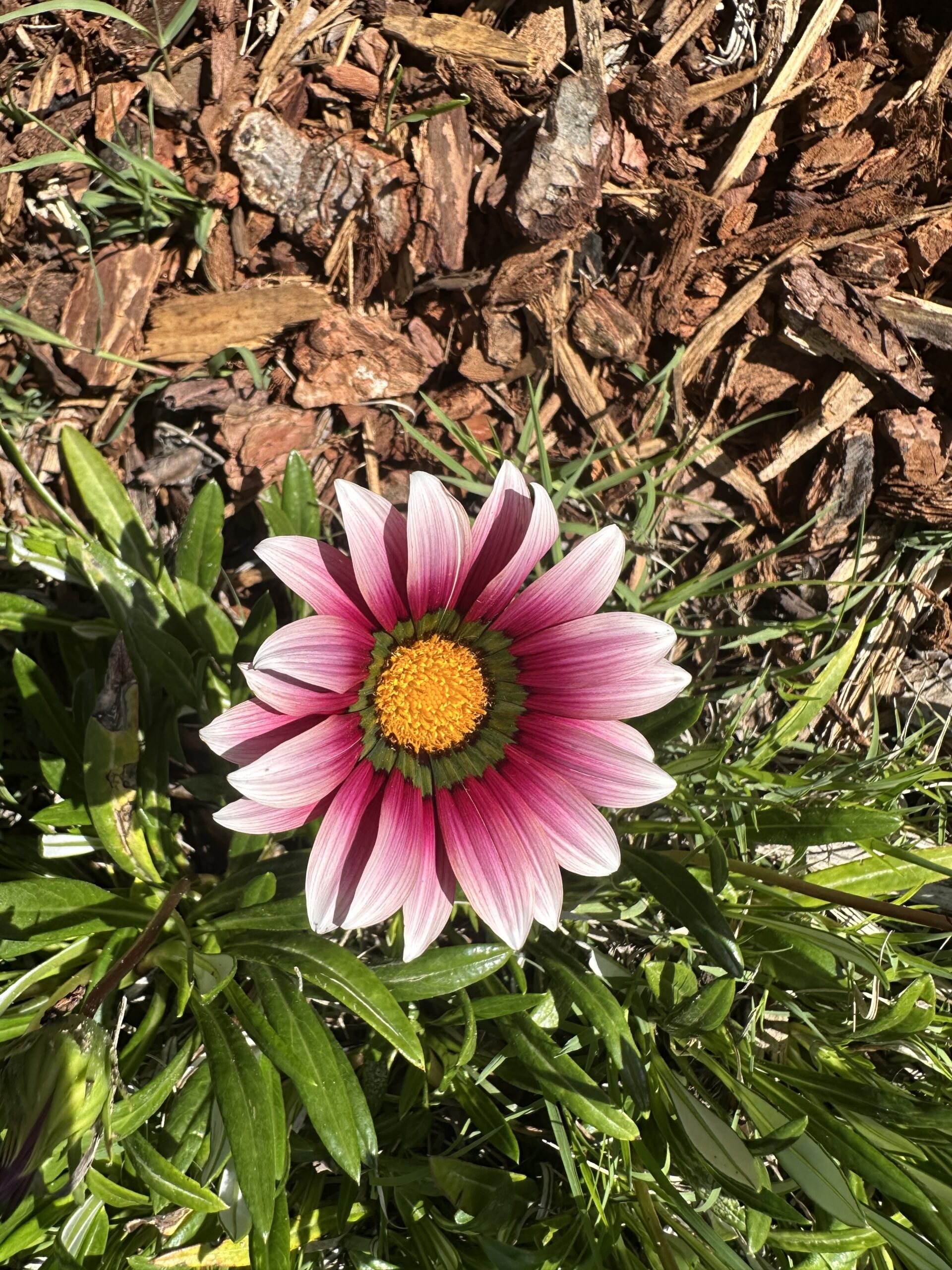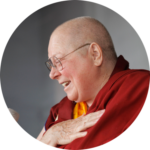
This article provides a brief summary of the entire teaching of H.H. Dorje Chang Buddha iII on zen meditation practice.
Although the practice of zen briefly described here can be useful to anyone and even practiced by those who do not consider themselves to be “Buddhists” or follow the way of the Buddha, the mantras and many related Dharmas do require taking refuge in the Buddha, Dharma, and Sangha or formally becoming a Buddhist and following a path of self-cultivation and other Dharma practices. You can start with reading the entire text upon which this summary is based in another BLOG article or here. Other foundational teaching by H.H. Dorje Chang Buddha III including “What Is Cultivation?” along with many other teachings can be found online at www.learningfrombuddha.org .
Understanding Zen: Zen cannot be found through searching as it is already within us.
1- After you study Expounding the Absolute Truth Through the Heart Sutra, you will apprehend what we are searching for, what our goal is, what we want to find, what we want to awaken to, and what we want to realize in the religious truths of zen.
2- We will never find that thing through searching! As long as we search for it, we will not find it! Why will we not find it? It is because when we search, we must use our own consciousness to search. It is like going outside and searching everywhere for your own child who is already being carried on your own back.
Practice Methods: Zen can only be realized through practice methods, which involve meditation and other techniques.
3- A type of practice method is necessary to find zen. Zen itself is not a practice method. However, we can find, obtain, and realize zen only through a practice method.
4- Zen is called a state. There is no state. If a state appears and we are able to use our consciousness to differentiate what type of state has appeared, then that already is not zen. However, the word state must be used as a figure of speech; otherwise, there are no words to express this. If state is not used, what word should be used? There has to be a term to express it.
5-You want to attain introspection, enlightenment, understanding of your mind and seeing your original nature that was not born and does not die!
6-At the Gaomin Monastery in Yangzhou, basically every seven days one person would awaken to zen, becoming enlightened and accomplished.
Mantras for Zen Practice: Three mantras are essential for zen practice.
7-The dharma that prevents external hindrances should first be applied to take precautions against such hindrances. There are two parts. The first part is the power of mantras. The other part is the power of one’s body.
8-The first mantra is called the “Altar Area Purification Mantra.”
9-The second mantra, which is exclusively for the practice of zen, is to eliminate karma and contemplate emptiness. It is called the “Mantra to Remove Obstacles, Enter Samadhi, Purify Karma, and Contemplate Emptiness” and can clear away one’s karmic forces, temporarily removing them.
10-The third mantra is the “Mind Quieting Mantra” requiring very strict observance of the five precepts and carrying out the three sets of pure precepts by those who practice zen. This “Mind Quieting Mantra,” requires an initiation in which bodhi holy water is sprinkled. Additionally, if you attain the power to read the minds of others, you may not show others that power. What you should show others is the undertaking of a Bodhisattva. A Bodhisattva enlightens himself first and then enlightens others.
11- You can practice zen with only the first two mantras and without the “Mind Quieting Mantra.” It is just that the results will be not be as good. These three mantras must first be recited [if you have them]. Only after you have performed this task may you start your zen practice.
Initial Meditation Techniques: Beginners should start with counting breaths, focusing on inhalations or exhalations depending on their body type, and then progress to observing light in water.
12- Only those who are good people of moral character who have realized a state of great compassion and awakening, who sincerely learn from the Buddhas, who have the four immeasurable minds, who carry out the myriad practices subsumed within the six perfections (paramitas), and who strictly abide by the precepts and disciplines.
13- We first start with the meditation method that Sakyamuni Buddha used under the bodhi tree. This first step is a dharma of clear observation (vipasyansa) practice categorized as pratyutpana. That is, one observes the ocean of self-nature in which prajna will appear. It is called observation of thoughts that lead to realization of emptiness.
14- You will start with the minor samatha and vipasyana method of counting breaths. We simply bear in mind that those who are overweight should count the exhalations. Thin people should count the inhalations. Start counting from one. For example, if you are counting your inhalations, you count the breaths that go in. You will softly utter “one.” You must say it out loud. Do not count when you exhale (or inhale if you are overweight). When the next breath is inhaled (or exhaled), you utter aloud “two.” If you cannot breathe in and utter aloud the numbers at the same time, then count the numbers silently in your mind. Continue like this until you count to ten, and then immediately begin counting all over again. Then, once more, start all over. Make sure you do not count to “eleven” or “twelve.” This is very important
15- After this step, we then begin to enter the pratyutpana water stage, which is practicing the water-light observation dharma. Pour a cup of water. After the water has been poured into the cup, place the cup about three feet away from you. Use indoor lamplight or moonlight from the outdoor sky. In that water there will be light. You should fix your vision upon that light, tightly staring at it. At that time, do not count your breaths. Your mind is totally focused upon that light, never moving away from that light one bit. Do not analyze the nature of that light. The longer you maintain your focus, the better.
Advanced Meditation Techniques: Advanced techniques involve focusing on sensations and maintaining concentration despite distractions like drowsiness or scattered thoughts.
16-When you can maintain your focus on that light for more than a half hour and your mind does not leave that light and is not scattered, or if you can maintain your focus on that light for more than twenty minutes and your mind does not run away, then at that time you should change to observing your inhalations or exhalations. When you exhale, you will feel an obvious sensation at the rim of your nostrils or at a certain position on your upper lip. Focus on that sensation at that particular location that stands out. You should very clearly feel that sensation when breathing in and breathing out.
However, your mind absolutely may not follow your breath as it moves inward or outward. All of your effort is completely focused solely upon that small position or location on your skin or lip that feels the sensation of breaths. If your mind follows your breath inward or outward, you have already lost your concentration. So, make sure to pay attention that your mind does not follow your breath as it moves. Your mind may only focus upon that particular position or location of your skin or lip that feels the breath. You should clearly feel the obvious sensation that particular position or location has when exhaling and inhaling.
17-That feeling will decrease or increase according to the decrease and increase of your zen practice concentration powers. There will even be sometimes when you will barely have any feeling at that position or location. However, there is no need to worry. The situation will improve when you focus your mind. When your power of samadhi strengthens, illusory phenomena will appear in your zen state, such as spots of light, circles of light, and figures. Do not be attached to or distracted by any of them.
Dealing with Distractions: If distractions occur, practitioners should switch to dynamic mindfulness techniques.
18- If your mind becomes scattered, like a wild horse, or if you are obstructed by drowsiness or sleep, then you should stop. You must switch to the dynamic mindfulness of observing waves. You should immediately hold level with both hands your cup from which you observed light. Place that cup on your hands and sit in the cross-legged posture. If you cannot sit in that posture, you may sit on a stool or bench. Hold the cup level with both hands and place it below your navel. Your hands should be resting firmly on your legs. At that time, because it is the nature of your body to slightly move, the cup you are holding will certainly move. Along with this, the light will move. The waves of water will move. You must completely fill the cup with water. Use a copper, brass, or bronze cup that is not too large. That is because if it is too large it will be too heavy.
19- Fix your eyes upon the light inside the cup. If at that time the cup moves, the light will become blurred, which is not good. Blurred light indicates your mind has not calmed down. Therefore, you should strive to have the water not move. It should not move one bit. Not one bit. Not one bit. Not one bit. You absolutely must keep it from moving. It should be totally still. If you can sit for a half hour or an hour or even a few hours during which time the water does not move, then your skills in the practice of zen will soon mature. You must understand that the movement of waves means the movement of light, and movement of light means the movement of waves. Know that the movement of waves and light means the movement of your mind. You certainly will have become enlightened if at that time you can attain the following: “waves and light continue to come and go, yet mindfulness, remaining unchanged, is not moved.”
Overcoming Fatigue: To overcome fatigue, practitioners should stop, rest, and use certain techniques.
20- You may become most susceptible to fatigue and want to sleep. As a result, the light of the waves easily becomes scattered or your mind is sidetracked. Sometimes it is even the case that only when water spills on you do you discover how sidetracked you are. [You may want to have a towel near you for these times]. You should immediately stop if at that time your eyelids are heavy with sleep, your mind begins to dull, you will soon fall asleep, and you truly cannot persist. Place the cup right in front of you. Then, pull down on your earlobes with both hands. After that, rub your palms together until they are hot. Then, begin to rub your face with your palms. Rub your face. Your face will heat up. Rub softly. Continue to rub softly. At that time, after you have rubbed your face, the obstacle of drowsiness or sleep will have disappeared. Then resume your meditation.
21- If obstructions reappear after you have meditated for a period of time and you realize you cannot go on, then you should immediately change the dharma you are practicing. Change to what? You immediately get off of your meditation seat, fill a bucket with cold water, and recite the “Using Water Mantra“ seven times. After that, wash your face with that cold water. Rub the water on your face, neck, and below your neck. At that time, your eyelids will no longer feel heavy, you will be clear-headed, and your vitality will be restored such that you can immediately resume your zen practice.
22- After you have resumed your sitting zen practice for a long time, it is frequently the case that you will once more be unable to continue with your practice. At that time, you must stop to avoid a serious zen malady or bad habit. You should sleep after you stop. After you awaken from your sleep, you will regain your vitality. You then continue your sitting practice. If you do not stop and sleep, problems may arise that are not easy to correct. It is possible that when you sit down to practice zen, you will only want to sleep or the other three great hindrances will appear.
23- You must remember that when practicing zen, if it is truly the case that the obstacle of drowsiness or sleep arrives, mental distraction arrives, wild fancy or improper thoughts arrive, or lack of focus arrives, then they must be dealt with. The obstacle of drowsiness or sleep is an especially formidable karmic obstacle. You do not know when it arrives. It causes you to fall asleep. By the time you awaken, time has already passed by.
Non-Attachment to Phenomena: Practitioners should not be attached to any phenomena that appear during zen practice, as non-attachment leads to deeper states and realization of Buddha-nature.
24- Remember that it is very easy for good states to appear in the course of practicing zen. Such zen phenomena that may appear include light, light spots, or even unusual phenomena, such as dharma protectors, demons, and so on, or an unusual fragrance wafts your way, or you hear sounds from outside or different places. You must remember that all such phenomena are illusions, are false. You must not be attached to them. Only with non-attachment will such phenomena deepen and progress. Only with nonattachment will you progress toward entering the pure dharmakaya. This is the truth of deeply entering the zen state. When you enter the zen state, truly attaining the state of non-abiding, your Buddha-nature will naturally appear. When you are able to be imperturbable in your Buddha-nature, then birth and death naturally end. You are able to end the cycle of birth and death. If you can be in your Buddha-nature, wisdom will naturally open up. You will be able to experience numerous kinds of holy states. You will realize all holy states. All of these are within the Buddha-nature.
CLICK for Background on certain erroneous views often held about meditation.
CLICK for quote from the Expounding the Absolute Truth through the Heart Sutra on the meaning of “Prajna Parami-Ta.“
CLICK for link to The Platform Sutra of the Sixth Patriarch (Huineng) as translated from the Japanese by the BDK English Tripitaka
CLICK for December 4, 2013 discourse by H.H. Dorje Chang Buddha III Expounds “The Great Dharma of Zen Practice.“
CLICK for article on Holy Vajra Poles shown above.
CLICK for information on the LFBCS Course P10-The Great Dharma of Zen Practice





Add comment